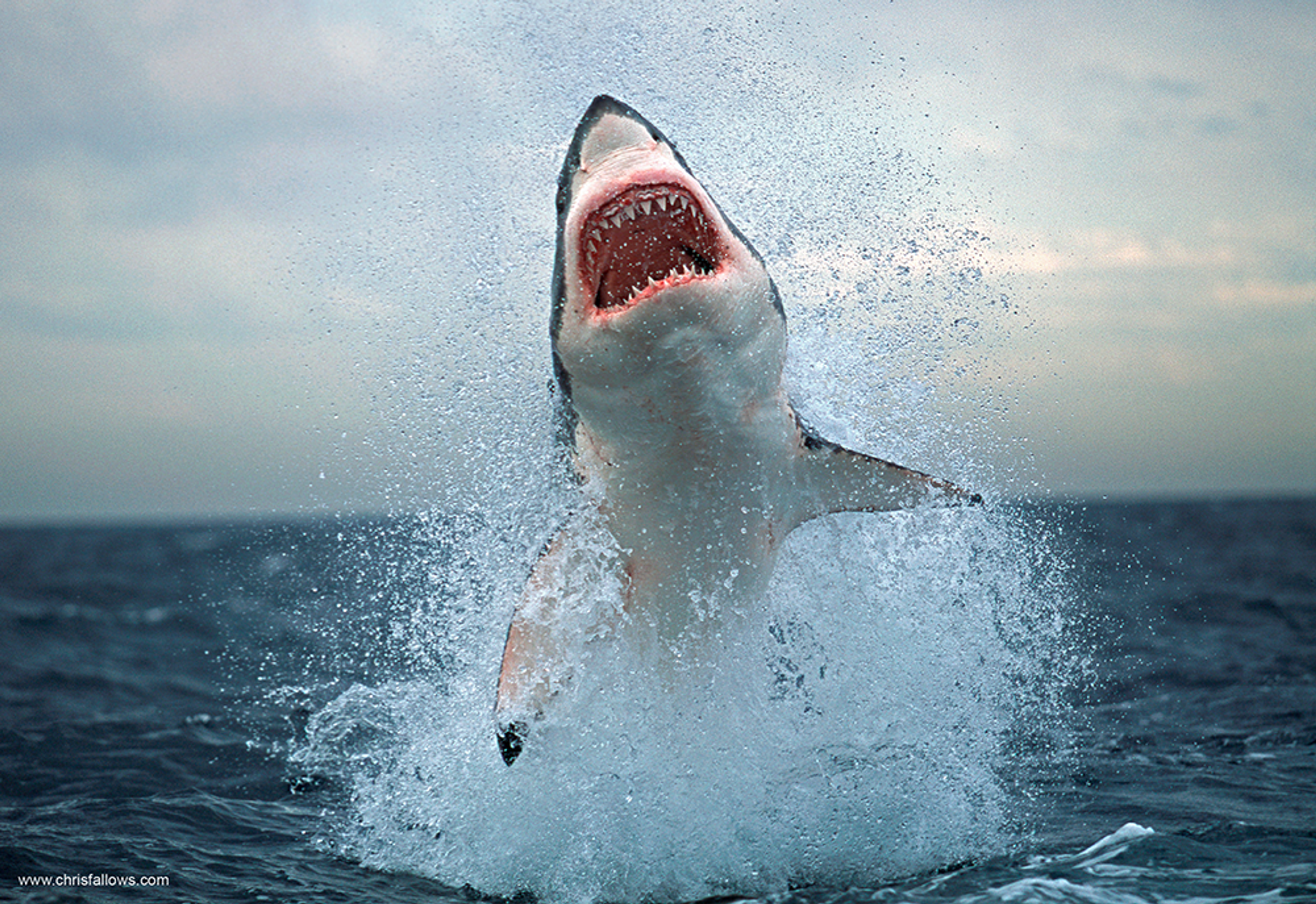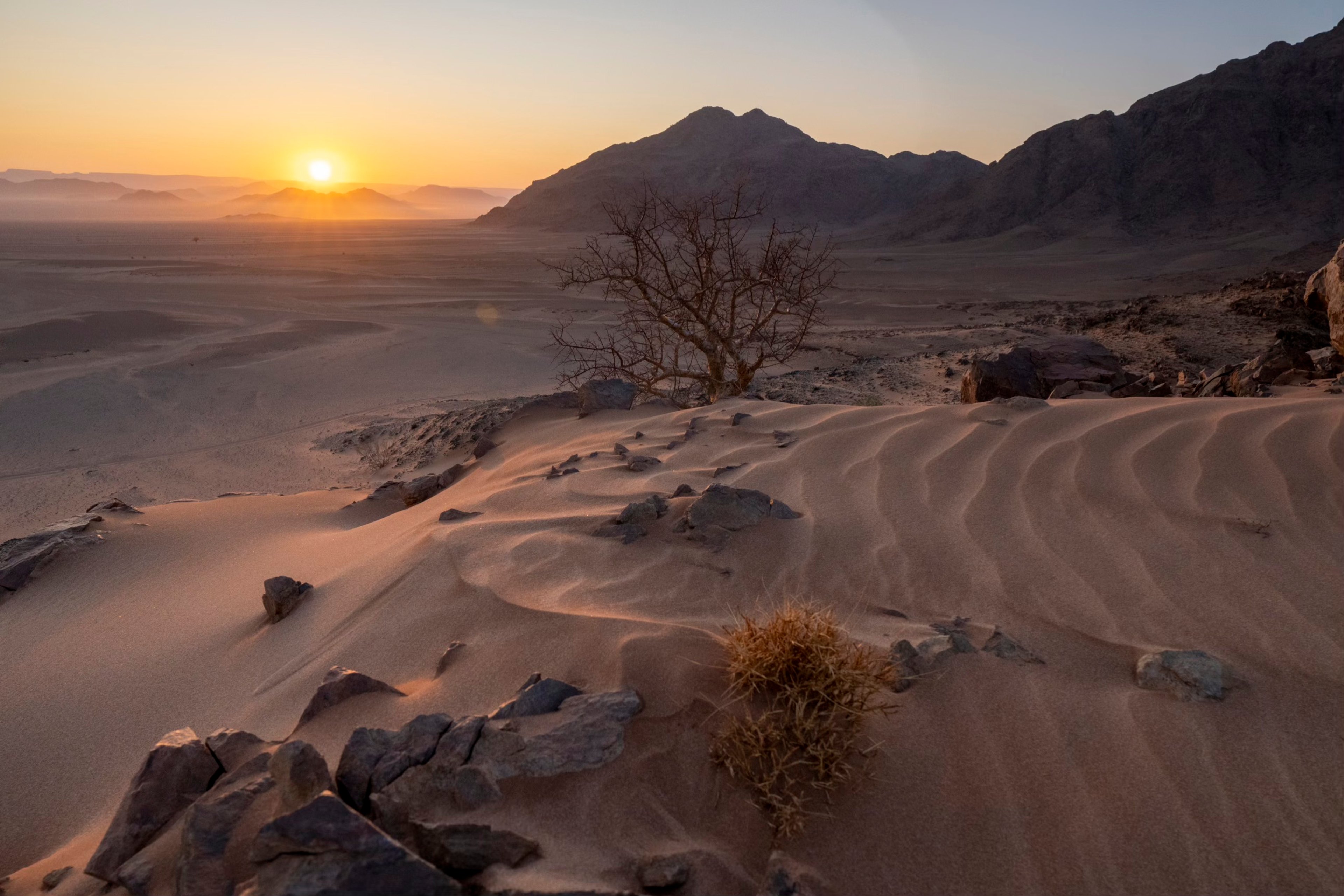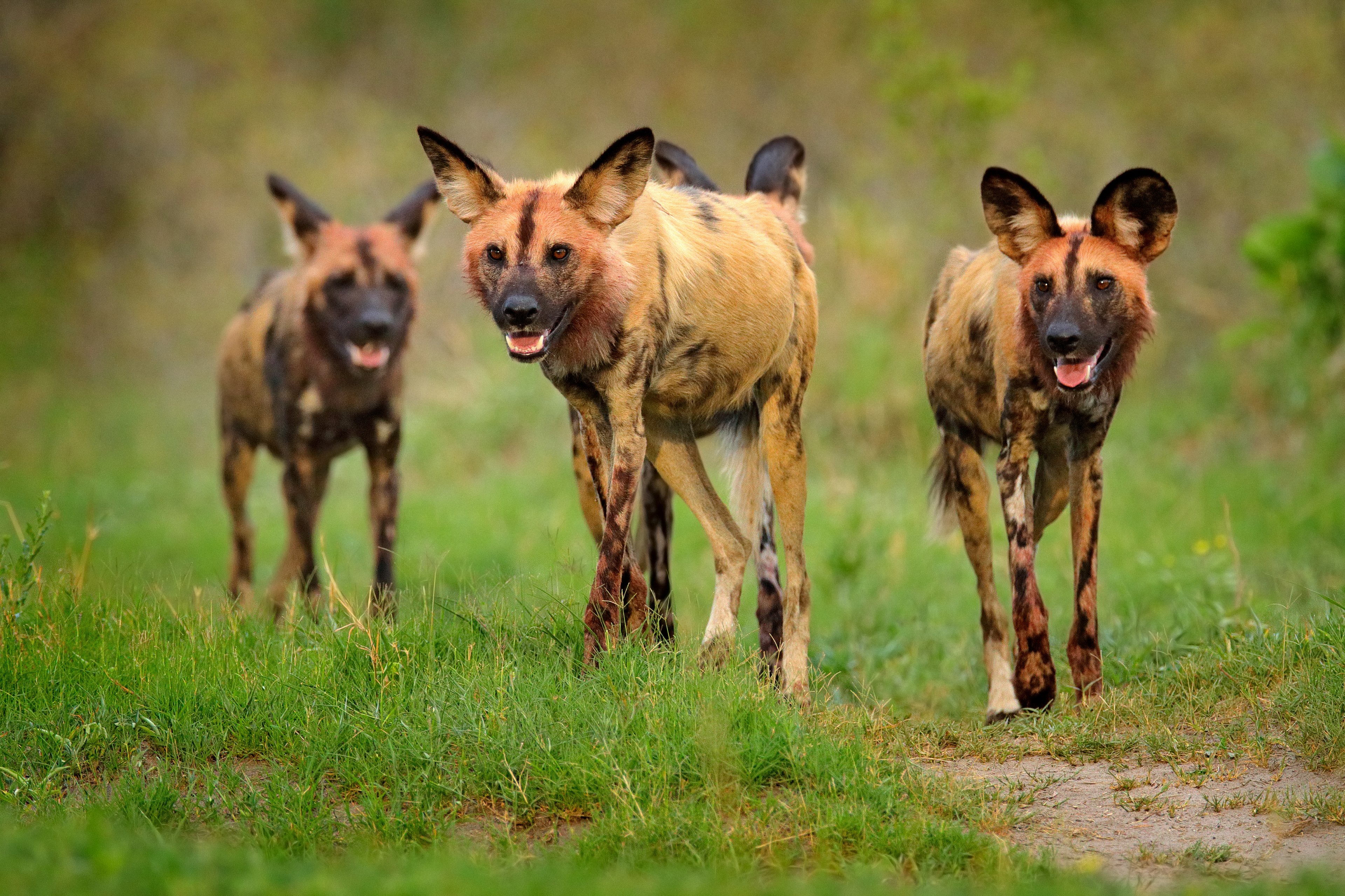“The loss of the great white shark is an incredibly sad reflection of how we as a species are destroying what has been around for thousands of years. Having been at Seal Island since the beginning, now it’s like walking through Jurassic Park and seeing the dinosaurs disappear.” Chris Fallows, conservationist, wildlife photographer and shark expert.
Chris Fallows Photography
Chris Fallows photographed the first recorded sighting of a great white shark breaching or “flying” out of the water near Seal Island in 1996. These astounding images flew around the world, and South Africa’s Western Cape quickly became the destination to witness the phenomenon of these powerful apex predators soaring out of the sea.
ROAR AFRICA guests have had life-changing experiences with Chris Fallows and great white sharks. Fallows, a lifelong conservationist, world-renowned wildlife photographer, and co-founder of Apex Shark Expeditions, has graciously shared his photography and passion with countless guests.
To witness up close the incredibly rare phenomenon of a great white shark in South Africa rocketing out of the water with a local expert as experienced and passionate as Fallows is an extreme privilege. We are so proud to work with him and share the wild beauty of the Western Cape, a sliver of Southern Africa we both call home, with our guests.
Is the Great White Shark Population Increasing or Decreasing?
Tragically, the days of these flying sharks may well be over. Scientists and marine biologists have recorded a rapid fall in great white numbers, thought to be between 300 and 500 in 2015, down to nearly zero across False Bay, Gansbaai, and the rest of the Western Cape. For Fallows, the disappearance of the sharks with which he has spent almost every day of the last two decades is devastating.
What No longer Lies Beneath
What has spurred this sharp decline in South Africa’s greatest apex predator? The answer is complex.
Blame has been attributed by the South African government and some scientists to a pair of orcas nicknamed Port and Starboard. These killer whales were first spotted in False Bay in 2015, hunting great whites for their nutrient-rich livers as their own food source further out at sea had likely depleted.
But, for Fallows, cementing the orcas as the chief cause of the great white decline simply absolves humans – government authorities, the fishing industry, and marine regulators – from any responsibility. While the orcas are certainly a factor, they cannot be the sole factor.
Fallows reminds us that “ecosystems regulate themselves around predatory presence, and the two [predators] in question appeared after the shark decline began. The pressure on these animals is now so great that they cannot sustain themselves in South African waters.”
Human-induced pressures in South Africa include demersal longline fishing, which targets smaller shark species that comprise up to 60% of a great white’s diet for 75% of their life cycle. The problem is further amplified by a lack of total allowable catch restrictions on these smaller sharks, illegal fishing in marine protected areas, and massive demand for smaller smooth-hound sharks. These smooth-hound sharks are exported to Australia for “flake” – shark meat commonly used to make Aussie fish and chips, while Australia’s shark fishery is tightly controlled with a strict total allowable catch.
Are Great White Sharks Protected in South Africa?
Consider the annual impact of anywhere between 11 and 60 great whites caught in nets, and a similar number lost to illegal fishing and by-catch, the decimation of the sharks’ food supply due to overfishing, plus those killed by orcas. No animal population can survive such staggering losses.
The removal of any apex predator is detrimental as they control the ecological pyramid that cascades directly beneath them. Their absence leads to new species moving into the environment and adjusted behavior from the species already there.
This trickle-down effect is in full swing along the Western Cape. Vast numbers of bronze whalers and sevengill sharks now populate the waters, leading to an unexpected boom in business for shark-cage diving. For shark spectators, the Cape still provides an awe-inspiring experience, especially given how interactive these new species of shark are. However, the loss of the great white sharks has had a catastrophic impact. The change in the hunting behavior of Cape fur seals and the different food sources sought by bronze whalers and sevengills put a fresh set of pressures on an already fragile marine environment.
Great White Shark Conservation
As to where the great whites have gone, experts aren’t sure. In the face of this indescribably sad loss, Chris Fallows’ limited edition fine art photographs of South Africa’s sharks and our planet’s precious wildlife have more meaning than ever.
These Chris Fallows shark images provide a powerful, intimate snapshot of these “flying sharks”, a phenomenon we may never see again. Fallows regularly holds exhibitions around the globe, which he hopes will act as a catalyst for common sense marine regulation and actionable protection for these precious apex predators.
All funds generated from the sale of Fallows’ work go toward conservation and rehabilitation projects, and you can see more of his iconic imagery at www.chrisfallows.com or via the Instagram handle @chrisfallowsphotography. It is our shared wish that every individual who stands before these images feels a sense of wonder, curiosity, and concern for what we sincerely hope will not be the last great white sharks of South Africa.
If you would like more information on South Africa or if you would like us to include a stay here in your luxury African safari itinerary, email welcome@roarafrica.com.




